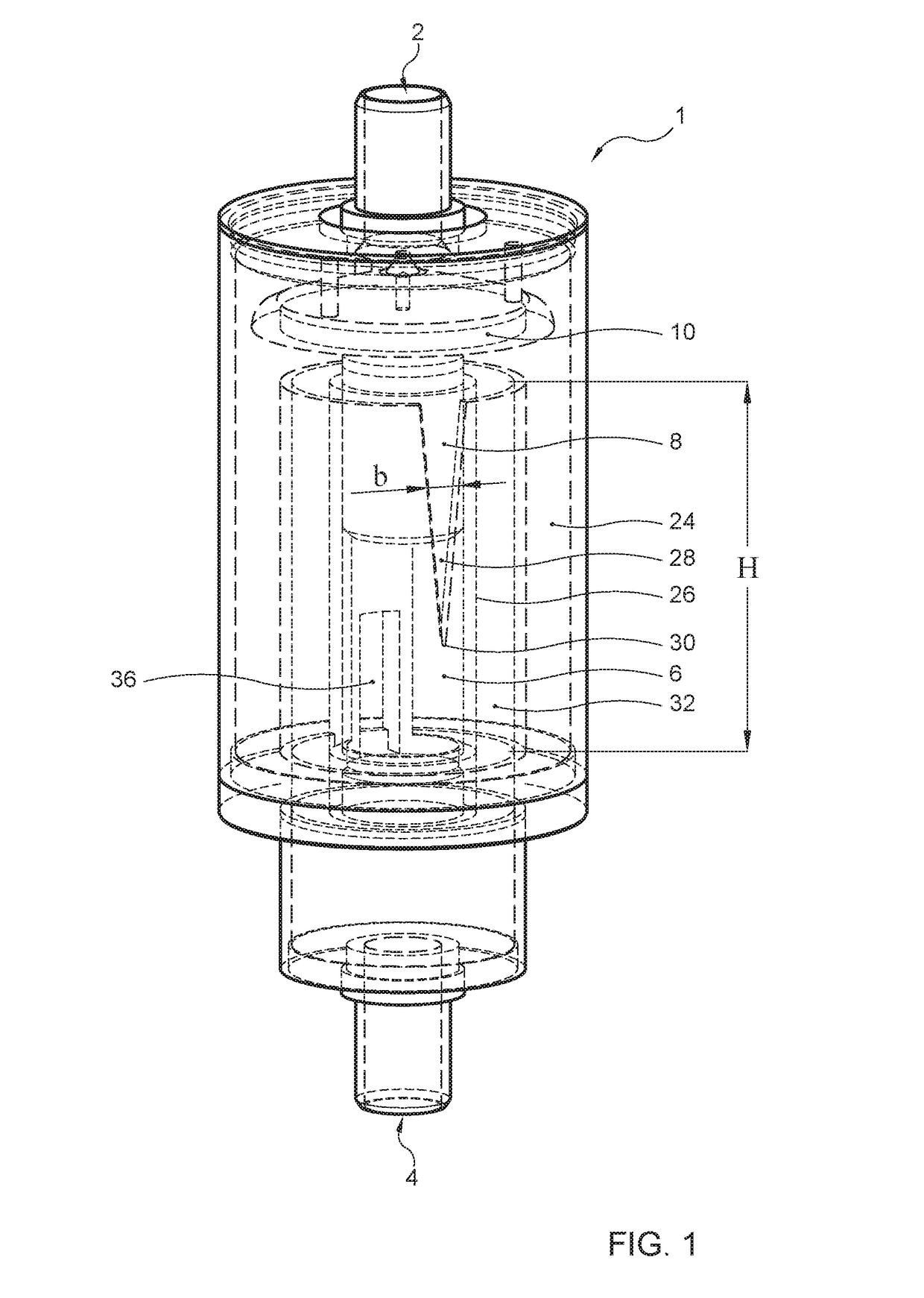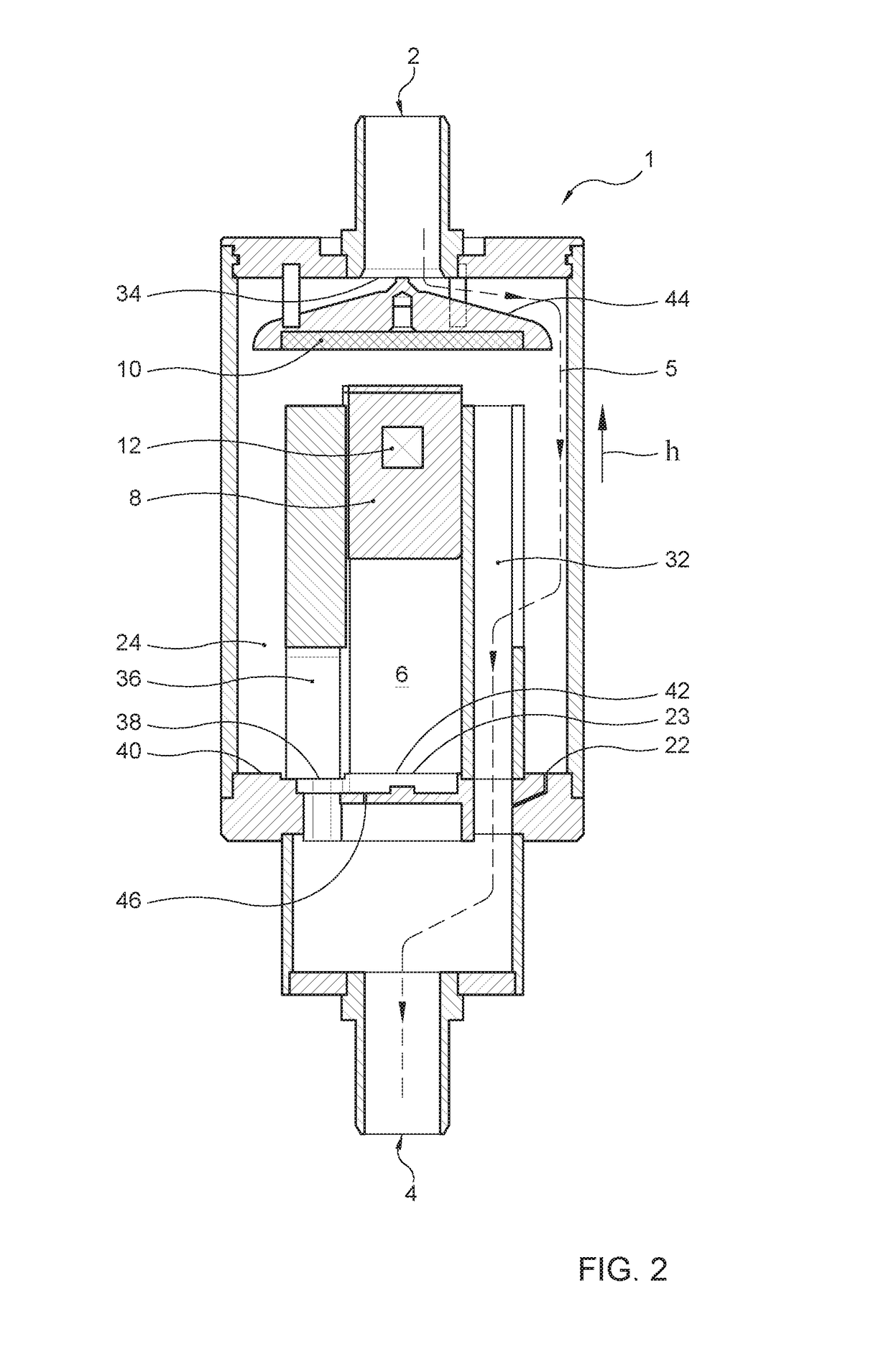Milk meter
a technology of milk meter and connector, which is applied in the field of milk meter, can solve the problems of typical connectors, and achieve the effect of stable milk surface and little “undulation”
- Summary
- Abstract
- Description
- Claims
- Application Information
AI Technical Summary
Benefits of technology
Problems solved by technology
Method used
Image
Examples
Embodiment Construction
[0023]In FIG. 1, with reference numeral 1 a possible embodiment of a milk meter according to the invention is indicated. The milk meter is provided with an inlet 2 into which, in use, the milk flow whose flow rate is to be measured is supplied. Further, the milk meter is provided with an outlet 4 where the milk flow whose flow rate has been measured, in use, leaves the milk meter again. Between the inlet and the outlet extends a liquid flow path 5 which is schematically indicated in the drawing with a broken line. Obviously, the broken line concerns just one possible pathway along which the milk flow can proceed; reason why the representation is schematic.
[0024]The milk meter is provided with a measuring chamber 6 which is included in the liquid flow path 5. The milk meter is furthermore provided with a float 8 which is in the measuring chamber and which is configured to float on the milk of the milk flow that, in use, is in the measuring chamber. The milk meter is configured such t...
PUM
 Login to View More
Login to View More Abstract
Description
Claims
Application Information
 Login to View More
Login to View More - R&D
- Intellectual Property
- Life Sciences
- Materials
- Tech Scout
- Unparalleled Data Quality
- Higher Quality Content
- 60% Fewer Hallucinations
Browse by: Latest US Patents, China's latest patents, Technical Efficacy Thesaurus, Application Domain, Technology Topic, Popular Technical Reports.
© 2025 PatSnap. All rights reserved.Legal|Privacy policy|Modern Slavery Act Transparency Statement|Sitemap|About US| Contact US: help@patsnap.com



